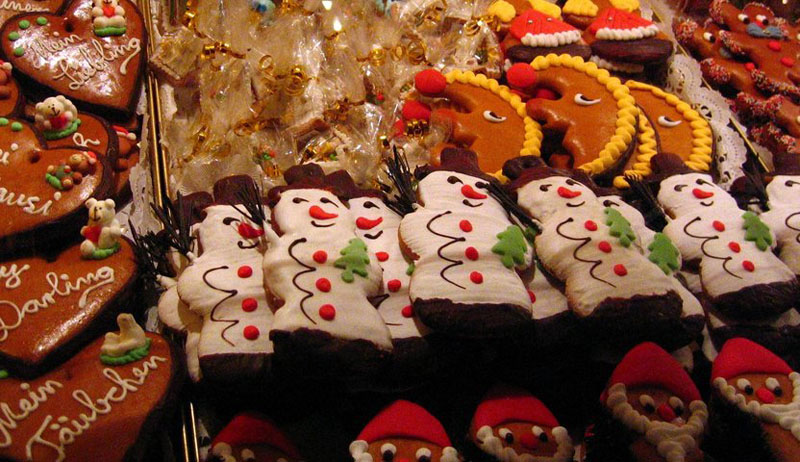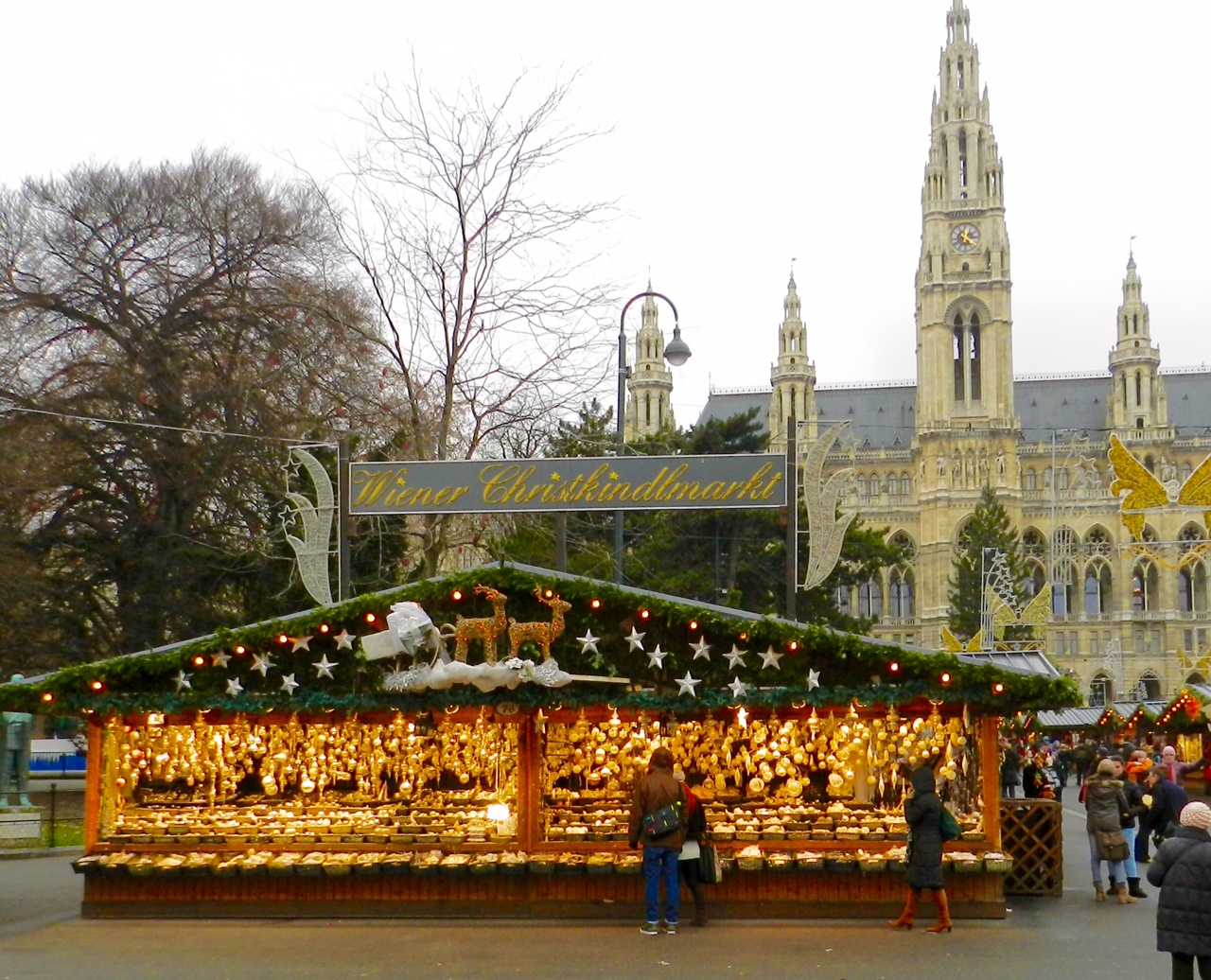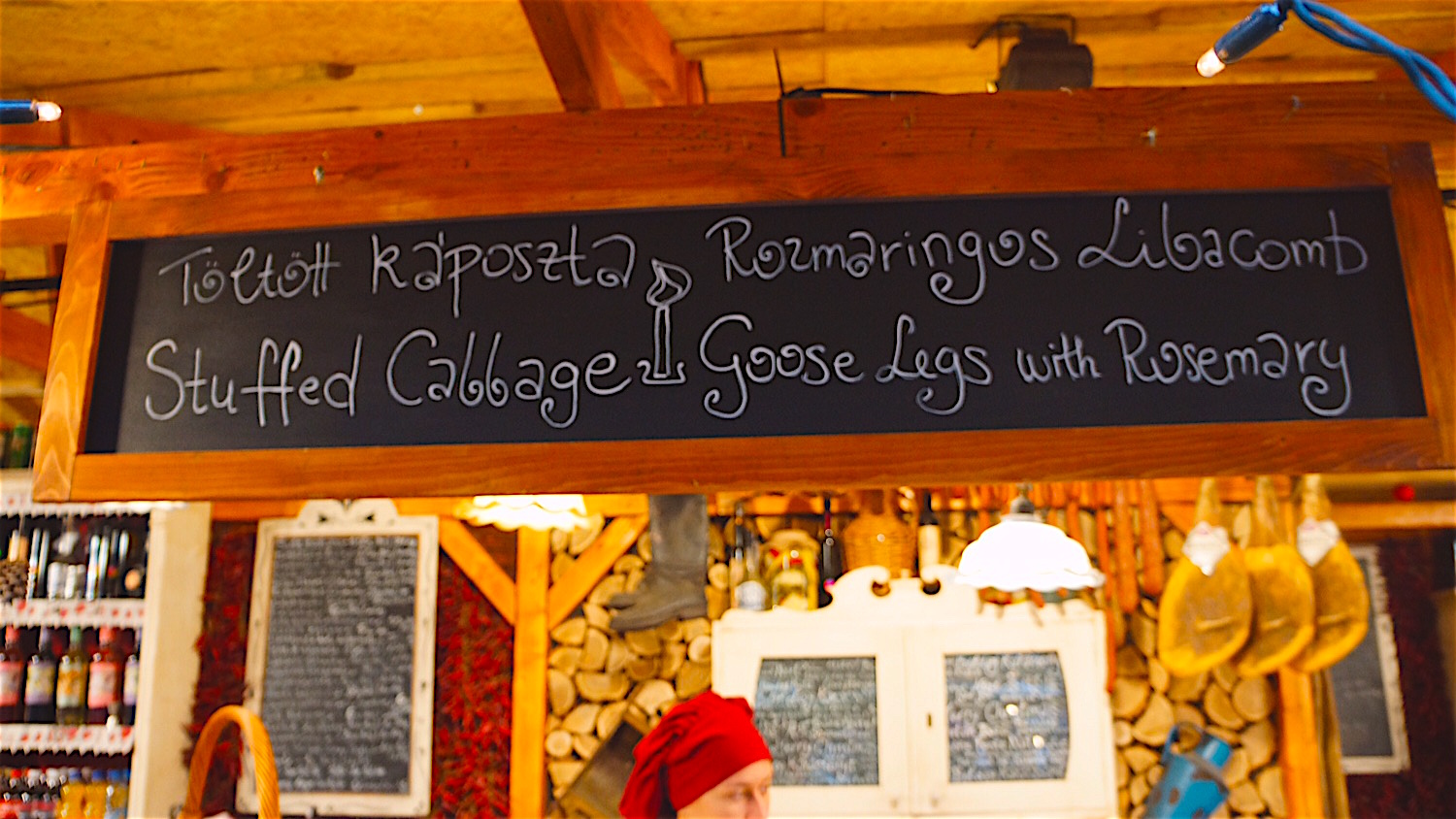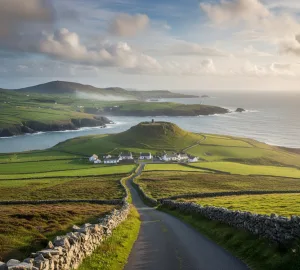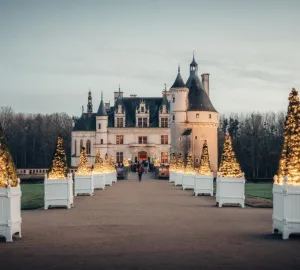3 minute read
These may be a reason why so many Christmas In July sales occur during the time when the temperatures hits 90 and above. It’s now we start fantasizing about winter, the brisk wind, the sight of the first snowflake, and the thought of booking a European Christmas Market River Cruise. It happened to us.
Our first was a Viking Christmas Markets Cruise in December last year, where we cruised the Danube, and experienced the snow, the scents, and the spirit of the Christmas Markets nearby. They were all sensuous memories — the scent and taste of gingerbread, bratwurst, strudel – along with dazzling handcrafted ornaments for pine-scented Christmas trees.
At Passau, Germany, the Christmas Market was close to the renowned St. Stephen’s church. About 70 small stalls sold Christmas foods, but Passau is known for being the original town where gingerbread was first created and made. The scent of spiced gingerbread was ever-present at the Passau market, also with steamed foot and a half long bratwursts. Passau is where we first tasted the intestine-warming Gluwein, a drink made from mulled wine, usually red, with spices, cloves and vanilla pods.
At Salzburg, Austria, the Christmas Market was located at the foot of the Hohensalzburg fortress, and the Cathedral of Salzburg. In addition to the Marzipan and Stollen cakes, is a Bratapfel – a form of baked apple – and roasted chestnuts. And more nuts, Gebrannte Mandeln, a candied roasted almond, is also unique to this Christmas Market, as is Mozartkugel (or, Mozart Balls) mainly because Mozart was born in Salzburg, actually right up the street from where the Market is held. The original Ball is made of green pistachio marzipan covered in a layer of nougat, then has a dark chocolate coating.
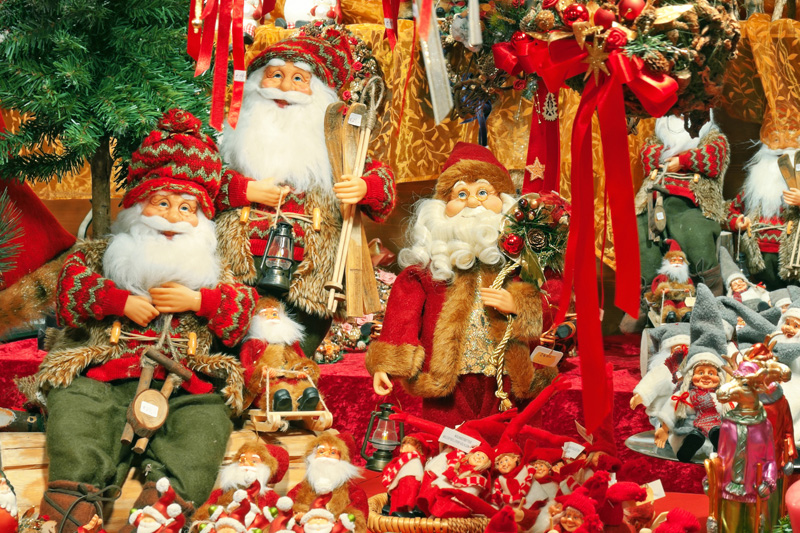
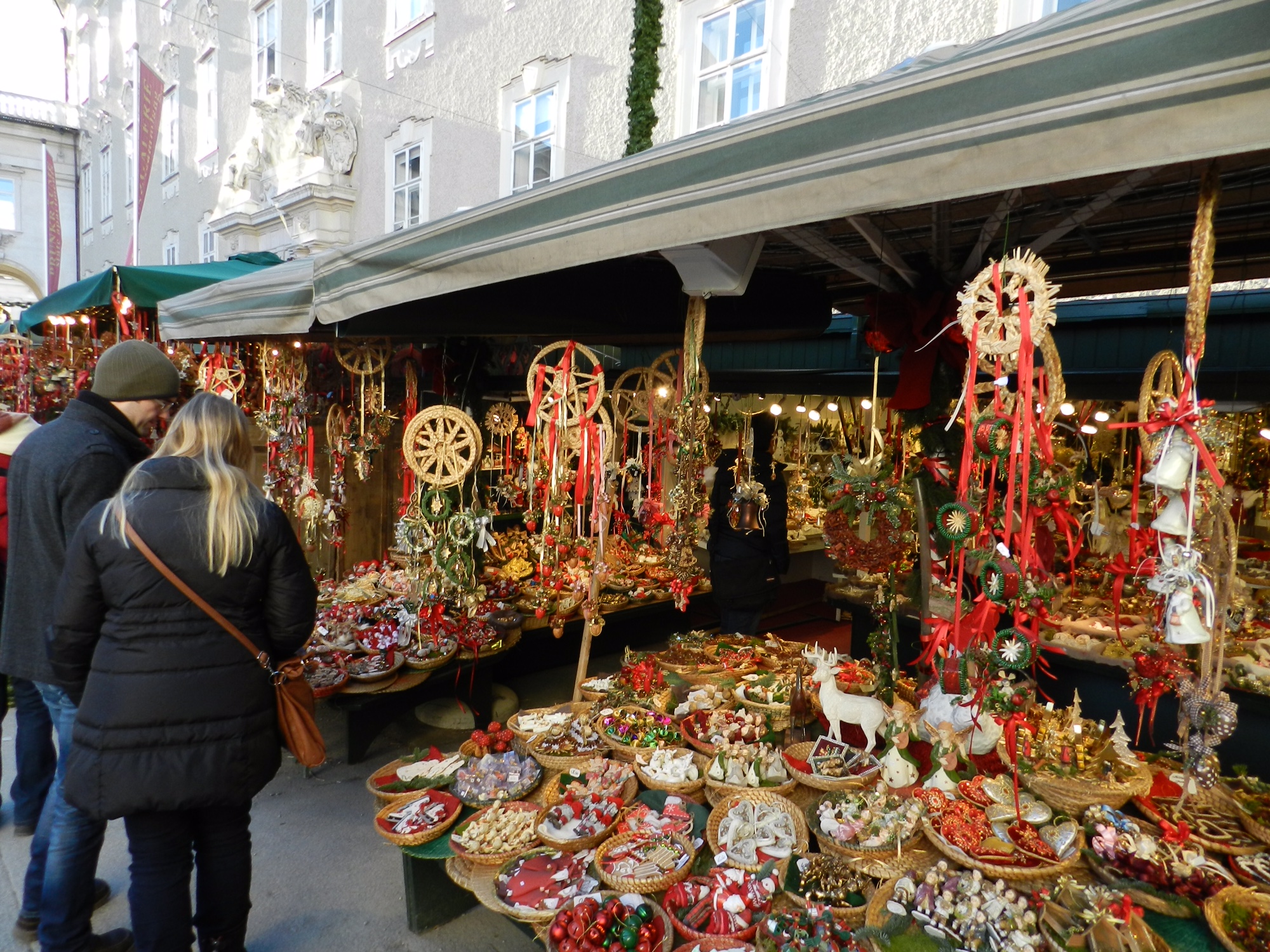
In Vienna, Austria, there are over 20 Christmas Markets, but we experienced the largest one, in front of the Rathaus (City Hall) in downtown Vienna, on a crisp, cold evening. The Austrian tastes were similar to the Salzburg Market. The traditional handmade items were everywhere, as was the homemade Strudel, all flavors, Sacher Tortes (multi-layered chocolate cakes) and Lebkuchen (gingerbread.)
Finally in Budapest, Hungary, the food we found at the Budapest Christmas Market was very surprising. Budapest is a city created from many diverse cultures, and the food reflected that. On Vorosmarty Square, there was the common Kürtös Kalács, chimney cakes, baked on a tapered cylindrical spit over an open fire. And instead of Lebkuchen, and Mozartkugel, there was stronger, wilder food: stuffed cabbage rolls, blood sausage, all types of bratwurst, goose thighs, pork knuckles, duck breasts, and roasted chestnuts. And no Gluwein, BUT there was Krampampuli, a Hungarian punch, made from dates, figs, dried, plums, and candied orange peel. In contrast to the polite Viennese Sacher Tortes and strudels, the wild, Magyar Hungarian tastes and scents joyously lingered, especially in the brisk, wintry air of Budapest.




